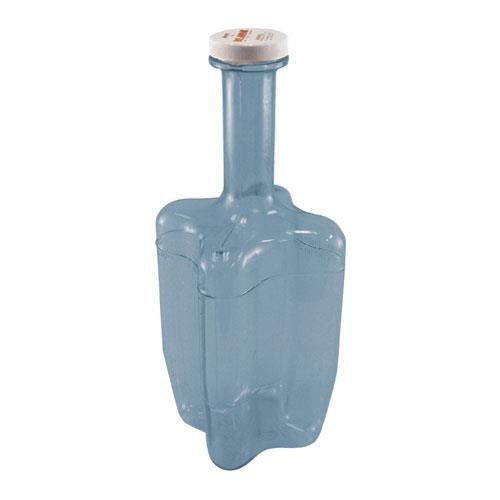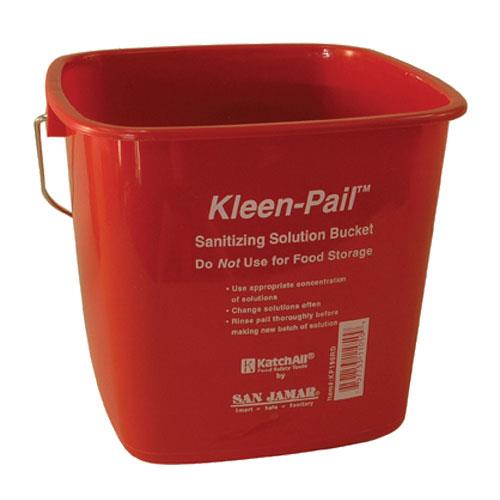 Visits from the health inspector are typically unannounced, so you’ll always want to be prepared. Follow these 10 simple back of house practices to pass any inspection with flying colors.
Visits from the health inspector are typically unannounced, so you’ll always want to be prepared. Follow these 10 simple back of house practices to pass any inspection with flying colors.
1. Temperature Logs
Maintaining proper product temperatures is one of the most important items on your checklist. Your product is one of the largest operating expenses you’ve got, and to throw it all in the trash would be a serious hit to your bottom line—not to mention serious consequences if any of your diners became ill. Be extra vigilant in warmer months by regularly checking temperature logs on your refrigerators, freezers and dry storage areas.
2. Do not overfill food pans
Perhaps not as obvious as #1, but overfilling your food pans almost guarantees that the top layer of the food will rise in temperature. Most are designed to ensure foods are 41° F or below, and will safely store cold foods (not cool them). Only fill your pans to their prescribed levels to ensure foods stay cold and safe to use.

3. Try a Cold Paddle
Cool soups and stock quickly and safely by investing in a Rapi-Kool® Cold Paddle from San Jamar. Putting hot food directly into the refrigerator will cause the inside of your refrigerator to warm up faster than the fridge can cool it down (and warm food will start to spoil). Designed to chill foods from the inside-out, you’ll decrease your risk of bacterial growth when you use an ice paddle made of food grade plastic that’s safe to use for rapidly cooling hot foods. Plus, it’s dishwasher safe!
4. Check your deliveries
Never take it for granted that product arriving to your restaurant each morning was stored and packaged properly during transport. Take the extra time, and keep a few thermometers (like a thermocouple) in your receiving area so you can check the temperature of your protein without poking a hole.
5. Protect food from cross-contamination
Raw proteins are known to carry harmful bacteria, like Salmonella (chicken). Bacteria can easily spread by sharing utensils, cutting boards, etc. Ensure you keep your guests safe by dedicating certain supplies for protein and the other to vegetables. Also, wash your hands frequently!
6. Storing the sanitizer bucket
One evening while dining out with my family, both my husband and mother asked for a refill on waters at the end of the meal. Suddenly both found themselves choking. Apparently, instead of pouring water into their glasses, the server reached for a pitcher of cleaning chemicals instead—sending both to the emergency room.
The pitcher of cleaning solution, we learned later, was sitting on a bus cart. The server was unaware that the pitcher contained toxic chemicals.
In June of this year, Andres Lorente of Bernicarlo, Spain, was served a clear, odorless, glassful of industrial cleaner that had been stored inside a wine bottle inside the fridge. Unfortunately for Lorento, he did not survive the severe burns to his throat and stomach after taking a small sip of the liquid.

While you may think both of these examples are exaggerated, Who would store cleaning chemicals in a pitcher to serve water? Why would anyone put dishwasher cleaner into a wine bottle in the fridge? Stories of these are all too common, and it’s better safe to prepare for a lack of common sense than to cause serious harm to patrons and lose your restaurant (and reputation).
Keep chemicals in approved chemical-only buckets and containers, and ensure your sanitization buckets (like this sanitizer bucket from san Jamar) are always located below and away from food to prevent cross-contamination. Also consider investing in sanitizer test strips to monitor the concentration of your sanitizing solution because more is not necessarily better. Also ensure you use separate wipe cloths for cleaning food prep equipment (like cutting boards) and for disinfecting surfaces.
7. Check plumbing frequently
Regular maintenance of your plumbing can save you some big bills later on. Health inspectors check for proper plumbing fixtures such as backflow devices, and also check to make sure you have sinks designed for food safe operations (like rinsing dishes) and cleaning (like a mop/slop sink).
8. Keep food surfaces fully operational
You might not have noticed that your cutting boards look a bit worn lately, sporting deep grooves that could trap unsafe bacteria and be difficult to clean. Or maybe your equipment and utensils are sporting wear like corrosion or peeling (non-stick pan?)—whatever the case, anything that comes into contact with food needs to be in proper working order.
9. Cleanliness is next to…
Well you know how the saying goes. Keeping a clean kitchen is one of the easiest (and most obvious) things you can do stay on the good side of health inspectors. Rodent droppings, excessive flies, or other insects can contaminate your food stores and spread disease. Need help cleaning in the hard-to-reach places? Check out our blog post for some help »
10. Lead your staff
You can’t be expected to be in the kitchen 24/7 (though it feels like you are). Take the time to train your staff on proper safety measures and you’ll pass any inspection with flying colors. It’s a two-way street though—you can’t expect your staff to follow proper protocol if you don’t, so lead by example and set the stage for an A grade from the health inspector each and every time.
Interested in finding out other violations that inspectors look for? Check out the guide, What to Expect When You’re Inspected: A Guide for Food Service Operators from the New York City Department of Health and Mental Hygiene. Though specific to NYC, this guide has great information on the inspection process and what items you could be graded on.
You can also get more tips from the National Restaurant Association »
 Corner Booth Blog | TundraFMP Restaurant Supply, News & Equipment Blog
Corner Booth Blog | TundraFMP Restaurant Supply, News & Equipment Blog


